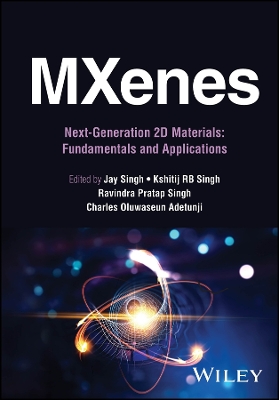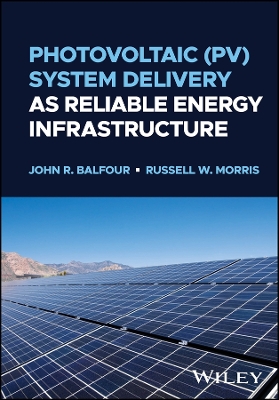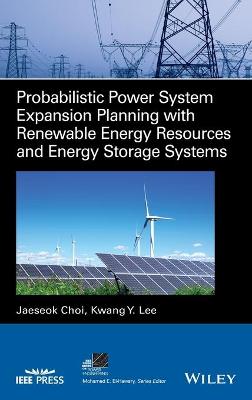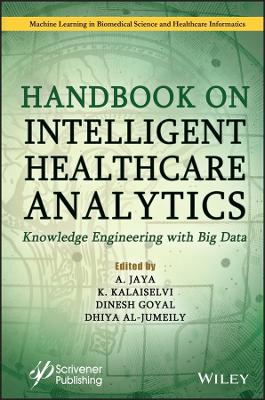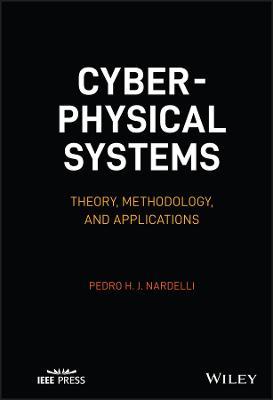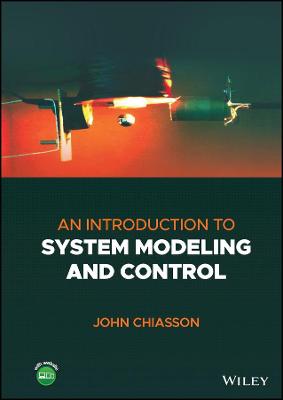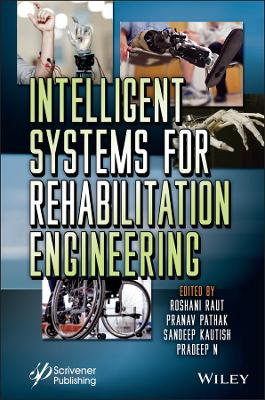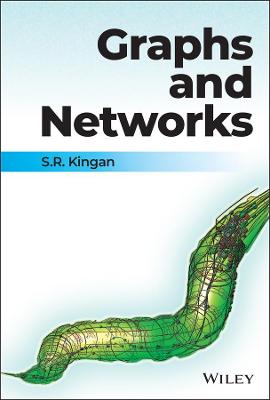Energy Storage
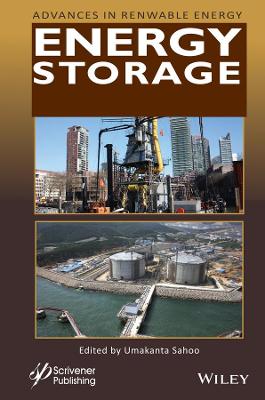 -15%
portes grátis
-15%
portes grátis
Energy Storage
Sahoo, Umakanta
John Wiley & Sons Inc
09/2021
304
Dura
Inglês
9781119555513
15 a 20 dias
546
Preface xiii
1 Thermal Energy Storage Systems for Concentrating Solar Power Plants 1
Dr. Pratibha Biswal
1.1 Introduction 2
1.2 Concentrating Solar Power (CSP) Technology 2
1.2.1 CSP Receiver Concepts 4
1.2.1.1 Parabolic Trough System 4
1.2.1.2 Linear Fresnel Reflector Systems 5
1.2.1.3 Central Receiver Plants 6
1.2.1.4 Dish System 7
1.3 Thermal Energy Storage in CSP 7
1.3.1 Active Two-Tank System 9
1.3.1.1 Active Two-Tank Direct 9
1.3.2 Active Single-Tank Thermocline 20
1.3.3 Other TES Systems 21
1.3.3.1 Packed-Bed Storage System 21
1.3.3.2 Passive Thermal Storage System 22
1.3.4 Types of Thermal Energy Storage (TES) 22
1.3.4.1 Sensible Energy Storage 22
1.3.4.2 Latent Heat Storage 24
1.3.4.3 Thermochemical Energy Storage 25
1.4 Corrosion Problem in TES-CSP System 26
1.5 Conclusion 26
References 27
2 Solar Thermal Power Plant with Thermal Energy Storage 31
Anil Kumar, Umakanta Sahoo and BK Jayasimha Rathod
2.1 Introduction 32
2.2 Literature Review 39
2.2.1 Power Installed Capacity of India 39
2.2.2 Energy Storage Systems 40
2.2.3 Thermal Storage Systems 40
2.3 Energy Demand of World 44
2.4 Experimental Set Up 48
2.4.1 Description of Experimental Set Ups 49
2.5 Experimental Data Analysis, Results and Discussions 55
2.5.1 Performance of Reflector Round the Year (Experimental Set up I) 58
2.5.1.1 Simulation Results 63
2.5.1.2 Typical PID of a Solar Module from 'India One' Solar Power Plant 66
2.5.1.3 Quantity of Steam to Turbine 67
2.6 Experimental Data Analysis, Results and Discussions 69
2.7 Conclusions 75
Symbols 76
Acknowledgement 77
References 77
3 Efficient Energy Storage Systems for Wind Power Application 81
Pradeep Kumar Sahu, Satyaranjan Jena and Umakanta Sahoo
3.1 Introduction 82
3.2 Energy Storage Devices 84
3.2.1 Electrical Energy Storage 84
3.2.1.1 Superconducting Magnetic Energy Storage (SMES) 85
3.2.1.2 Supercapacitors 86
3.2.2 Mechanical Energy Storage 87
3.2.2.1 Flywheel Energy Storage (FES) 87
3.2.2.2 Pumped Hydroelectric Storage (PHS) 88
3.2.2.3 Compressed Air Energy Storage 89
3.2.3 Chemical Energy Storage 89
3.2.3.1 Battery Storage System (BSS) 90
3.2.3.2 Fuel Cells 90
3.2.3.3 Solar Fuel 90
3.2.4 Thermal Energy Storage 93
3.3 Hybrid Energy Storage System (HESS) 93
3.4 Power Converter Topologies for Hybrid Energy Storage 95
3.4.1 Passive Topology 95
3.4.2 Semi-Active Topology 97
3.4.3 Active Topology 97
3.4.4 Comparison of Different Topologies 98
3.5 HESS Energy Management and Control 99
3.5.1 HESS Control Schemes 99
3.5.1.1 Classical Control Scheme 100
3.5.1.2 Intelligent Control Schemes 102
3.5.2 Comparison of Different Control Schemes 103
3.6 Applications of the Storage Technologies in Wind Power 104
3.6.1 Power Fluctuation Mitigation 104
3.6.2 Low Voltage Ride Through (LVRT) 105
3.6.3 Voltage Control Support 105
3.6.4 Oscillation Damping 106
3.6.5 Peak Shaving 106
3.6.6 Spinning Reserve 107
3.6.7 Time Shifting 108
3.6.8 Transmission Line Curtailment 108
3.6.9 Load Following 109
3.6.10 Unit Commitment 110
3.7 Conclusion 110
References 112
4 Advances in Electrochemical Energy Storage Device: Supercapacitor 119
Swagatika Kamila, Bikash Kumar Jena and Suddhasatwa Basu
4.1 Introduction 120
4.2 Types of Energy Storage Devices 120
4.3 Overview of Supercapacitor and Its Global Scenario 122
4.4 Status of Supercapacitor in India 125
4.5 Types of Supercapacitor According to the Energy Storage Mechanism 126
4.5.1 Electrical Double-Layer Capacitor (EDLC) 126
4.5.2 Pseudocapacitor 128
4.5.3 Hybrid Supercapacitor 129
4.5.3.1 Composite Supercapacitor 129
4.5.3.2 Asymmetric Supercapacitor 130
4.5.3.3 Battery Type 130
4.6 Basic Components of Supercapacitor 130
4.6.1 Current Collector 130
4.6.2 Electrode Materials 131
4.6.2.1 EDLC Materials 131
4.6.2.2 Pseudocapacitive Materials 132
4.6.3 Electrolytes 138
4.6.4 Binders 138
4.6.5 Separators 139
4.7 Conclusion 140
References 140
5 Thermal Energy Storage Systems for Cooling and Heating Applications 149
Pankaj Kalita, Debangsu Kashyap and Urbashi Bordoloi
5.1 Introduction 150
5.2 Classification of Storage Systems 151
5.3 Sensible Heat Storage 151
5.3.1 Water-Based Storage 153
5.3.2 Packed Beds 156
5.3.3 Aquifers 158
5.3.4 Borehole 160
5.4 Latent Heat Storage 163
5.4.1 Enhancement Methods for Thermal Conductivity Enhancement 164
5.4.1.1 Macro and Microencapsulation 165
5.4.1.2 Addition of Fins 166
5.4.1.3 Multiple PCM Technology 167
5.4.1.4 Immersion Through Material Pores 167
5.5 Thermochemical Heat Storage 168
5.5.1 Absorption Cycle 172
5.5.2 Adsorption Cycles 173
5.5.3 Chemical Reaction 174
5.6 Application of Thermal Energy Storage Systems 176
5.6.1 Absorption Refrigeration System 176
5.6.2 Solar Pumps Application in Space Cooling/Heating 177
5.6.3 Solar Pond Integrated Packed-Bed TES System for Space Heating 178
5.6.4 Solar FPC 179
5.6.5 Solar PV/T 181
5.6.6 Solar Air Heater 183
5.7 Design Problems 184
5.8 Conclusion 196
References 196
6 Optimistic Technological Approaches for Sustainable Energy Storage Devices/Materials 201
Benjamin Raj, Arya Das, Suddhasatwa Basu and Mamata Mohapatra
6.1 Introduction 202
6.2 Advancements in Supercapacitor Technology 202
6.2.1 The Current Global Supercapacitor Market 205
6.2.2 Challenges: From Lab to Market 207
6.2.3 Current Trends and Opportunities 209
6.2.4 Composites and Novel Architectures 209
6.2.5 Microsupercapacitors 210
6.2.6 Hybrid Supercapacitors 211
6.2.7 Flexible, Wearable and Smart Supercapacitors 211
6.3 Advancements in Battery Technology 212
6.3.1 Challenges 213
6.3.2 Nickel-Cadmium Batteries 213
6.3.3 Nickel-Metal Hydride Batteries 214
6.3.4 Lead Storage Battery 214
6.3.5 Sodium Sulphur Battery 215
6.3.6 Flow Batteries 217
6.3.7 Lithium Ion Batteries (LIBs) 218
6.4 Conclusion and Outlook 221
References 222
7 Electro-Chemical Battery Energy Storage Systems - A Comprehensive Overview 229
Nikhil P G and G Sivaramakrishnan
7.1 Introduction 229
7.2 Electro-Chemical Storage Devices 231
7.2.1 Definition and Types 231
7.2.2 Energy Storage Landscape and Benefits of Electro-Chemical Storage 235
7.2.3 Drivers and Barriers in Implementation of Energy Storage Systems 240
7.3 Design and Performance Parameters for Electro-Chemical Storage 240
7.3.1 Design Basis for Large Storage Application 240
7.4 Case Study From Industry 243
7.5 Best Practices in Battery Maintenance 245
7.6 End of Life Cycle of Batteries 247
7.6.1 Major Recyclable Products from the Process 248
7.6.2 Disposal Measures 248
7.7 India Energy Storage Mission 249
7.8 Conclusion 251
References 251
8 Simulation of Charging and Discharging a Thermal Energy Storage System Involving Phase Change Material 253
S. Sanyal, A. Borgohain and S.P. Gupta
8.1 Introduction 253
8.2 Design of Latent Heat Storage (LHS) System 256
8.2.1 Identification of Suitable PCM 256
8.2.2 Design of Heat Exchanger 260
8.2.3 Performance Evaluation 261
8.3 Analysis of Phase Change Systems 261
8.4 Simulation 263
8.4.1 Equations Involved 263
8.4.2 Modelling 265
8.4.3 Transient Analysis 269
8.5 Results and Discussion 269
8.5.1 Scalability of Mesh 269
8.5.2 Melting 270
8.5.3 Solidification 271
8.5.4 Performance 273
8.6 Conclusion 274
Acknowledgement 274
Abbreviation 275
References 275
Index 277
Preface xiii
1 Thermal Energy Storage Systems for Concentrating Solar Power Plants 1
Dr. Pratibha Biswal
1.1 Introduction 2
1.2 Concentrating Solar Power (CSP) Technology 2
1.2.1 CSP Receiver Concepts 4
1.2.1.1 Parabolic Trough System 4
1.2.1.2 Linear Fresnel Reflector Systems 5
1.2.1.3 Central Receiver Plants 6
1.2.1.4 Dish System 7
1.3 Thermal Energy Storage in CSP 7
1.3.1 Active Two-Tank System 9
1.3.1.1 Active Two-Tank Direct 9
1.3.2 Active Single-Tank Thermocline 20
1.3.3 Other TES Systems 21
1.3.3.1 Packed-Bed Storage System 21
1.3.3.2 Passive Thermal Storage System 22
1.3.4 Types of Thermal Energy Storage (TES) 22
1.3.4.1 Sensible Energy Storage 22
1.3.4.2 Latent Heat Storage 24
1.3.4.3 Thermochemical Energy Storage 25
1.4 Corrosion Problem in TES-CSP System 26
1.5 Conclusion 26
References 27
2 Solar Thermal Power Plant with Thermal Energy Storage 31
Anil Kumar, Umakanta Sahoo and BK Jayasimha Rathod
2.1 Introduction 32
2.2 Literature Review 39
2.2.1 Power Installed Capacity of India 39
2.2.2 Energy Storage Systems 40
2.2.3 Thermal Storage Systems 40
2.3 Energy Demand of World 44
2.4 Experimental Set Up 48
2.4.1 Description of Experimental Set Ups 49
2.5 Experimental Data Analysis, Results and Discussions 55
2.5.1 Performance of Reflector Round the Year (Experimental Set up I) 58
2.5.1.1 Simulation Results 63
2.5.1.2 Typical PID of a Solar Module from 'India One' Solar Power Plant 66
2.5.1.3 Quantity of Steam to Turbine 67
2.6 Experimental Data Analysis, Results and Discussions 69
2.7 Conclusions 75
Symbols 76
Acknowledgement 77
References 77
3 Efficient Energy Storage Systems for Wind Power Application 81
Pradeep Kumar Sahu, Satyaranjan Jena and Umakanta Sahoo
3.1 Introduction 82
3.2 Energy Storage Devices 84
3.2.1 Electrical Energy Storage 84
3.2.1.1 Superconducting Magnetic Energy Storage (SMES) 85
3.2.1.2 Supercapacitors 86
3.2.2 Mechanical Energy Storage 87
3.2.2.1 Flywheel Energy Storage (FES) 87
3.2.2.2 Pumped Hydroelectric Storage (PHS) 88
3.2.2.3 Compressed Air Energy Storage 89
3.2.3 Chemical Energy Storage 89
3.2.3.1 Battery Storage System (BSS) 90
3.2.3.2 Fuel Cells 90
3.2.3.3 Solar Fuel 90
3.2.4 Thermal Energy Storage 93
3.3 Hybrid Energy Storage System (HESS) 93
3.4 Power Converter Topologies for Hybrid Energy Storage 95
3.4.1 Passive Topology 95
3.4.2 Semi-Active Topology 97
3.4.3 Active Topology 97
3.4.4 Comparison of Different Topologies 98
3.5 HESS Energy Management and Control 99
3.5.1 HESS Control Schemes 99
3.5.1.1 Classical Control Scheme 100
3.5.1.2 Intelligent Control Schemes 102
3.5.2 Comparison of Different Control Schemes 103
3.6 Applications of the Storage Technologies in Wind Power 104
3.6.1 Power Fluctuation Mitigation 104
3.6.2 Low Voltage Ride Through (LVRT) 105
3.6.3 Voltage Control Support 105
3.6.4 Oscillation Damping 106
3.6.5 Peak Shaving 106
3.6.6 Spinning Reserve 107
3.6.7 Time Shifting 108
3.6.8 Transmission Line Curtailment 108
3.6.9 Load Following 109
3.6.10 Unit Commitment 110
3.7 Conclusion 110
References 112
4 Advances in Electrochemical Energy Storage Device: Supercapacitor 119
Swagatika Kamila, Bikash Kumar Jena and Suddhasatwa Basu
4.1 Introduction 120
4.2 Types of Energy Storage Devices 120
4.3 Overview of Supercapacitor and Its Global Scenario 122
4.4 Status of Supercapacitor in India 125
4.5 Types of Supercapacitor According to the Energy Storage Mechanism 126
4.5.1 Electrical Double-Layer Capacitor (EDLC) 126
4.5.2 Pseudocapacitor 128
4.5.3 Hybrid Supercapacitor 129
4.5.3.1 Composite Supercapacitor 129
4.5.3.2 Asymmetric Supercapacitor 130
4.5.3.3 Battery Type 130
4.6 Basic Components of Supercapacitor 130
4.6.1 Current Collector 130
4.6.2 Electrode Materials 131
4.6.2.1 EDLC Materials 131
4.6.2.2 Pseudocapacitive Materials 132
4.6.3 Electrolytes 138
4.6.4 Binders 138
4.6.5 Separators 139
4.7 Conclusion 140
References 140
5 Thermal Energy Storage Systems for Cooling and Heating Applications 149
Pankaj Kalita, Debangsu Kashyap and Urbashi Bordoloi
5.1 Introduction 150
5.2 Classification of Storage Systems 151
5.3 Sensible Heat Storage 151
5.3.1 Water-Based Storage 153
5.3.2 Packed Beds 156
5.3.3 Aquifers 158
5.3.4 Borehole 160
5.4 Latent Heat Storage 163
5.4.1 Enhancement Methods for Thermal Conductivity Enhancement 164
5.4.1.1 Macro and Microencapsulation 165
5.4.1.2 Addition of Fins 166
5.4.1.3 Multiple PCM Technology 167
5.4.1.4 Immersion Through Material Pores 167
5.5 Thermochemical Heat Storage 168
5.5.1 Absorption Cycle 172
5.5.2 Adsorption Cycles 173
5.5.3 Chemical Reaction 174
5.6 Application of Thermal Energy Storage Systems 176
5.6.1 Absorption Refrigeration System 176
5.6.2 Solar Pumps Application in Space Cooling/Heating 177
5.6.3 Solar Pond Integrated Packed-Bed TES System for Space Heating 178
5.6.4 Solar FPC 179
5.6.5 Solar PV/T 181
5.6.6 Solar Air Heater 183
5.7 Design Problems 184
5.8 Conclusion 196
References 196
6 Optimistic Technological Approaches for Sustainable Energy Storage Devices/Materials 201
Benjamin Raj, Arya Das, Suddhasatwa Basu and Mamata Mohapatra
6.1 Introduction 202
6.2 Advancements in Supercapacitor Technology 202
6.2.1 The Current Global Supercapacitor Market 205
6.2.2 Challenges: From Lab to Market 207
6.2.3 Current Trends and Opportunities 209
6.2.4 Composites and Novel Architectures 209
6.2.5 Microsupercapacitors 210
6.2.6 Hybrid Supercapacitors 211
6.2.7 Flexible, Wearable and Smart Supercapacitors 211
6.3 Advancements in Battery Technology 212
6.3.1 Challenges 213
6.3.2 Nickel-Cadmium Batteries 213
6.3.3 Nickel-Metal Hydride Batteries 214
6.3.4 Lead Storage Battery 214
6.3.5 Sodium Sulphur Battery 215
6.3.6 Flow Batteries 217
6.3.7 Lithium Ion Batteries (LIBs) 218
6.4 Conclusion and Outlook 221
References 222
7 Electro-Chemical Battery Energy Storage Systems - A Comprehensive Overview 229
Nikhil P G and G Sivaramakrishnan
7.1 Introduction 229
7.2 Electro-Chemical Storage Devices 231
7.2.1 Definition and Types 231
7.2.2 Energy Storage Landscape and Benefits of Electro-Chemical Storage 235
7.2.3 Drivers and Barriers in Implementation of Energy Storage Systems 240
7.3 Design and Performance Parameters for Electro-Chemical Storage 240
7.3.1 Design Basis for Large Storage Application 240
7.4 Case Study From Industry 243
7.5 Best Practices in Battery Maintenance 245
7.6 End of Life Cycle of Batteries 247
7.6.1 Major Recyclable Products from the Process 248
7.6.2 Disposal Measures 248
7.7 India Energy Storage Mission 249
7.8 Conclusion 251
References 251
8 Simulation of Charging and Discharging a Thermal Energy Storage System Involving Phase Change Material 253
S. Sanyal, A. Borgohain and S.P. Gupta
8.1 Introduction 253
8.2 Design of Latent Heat Storage (LHS) System 256
8.2.1 Identification of Suitable PCM 256
8.2.2 Design of Heat Exchanger 260
8.2.3 Performance Evaluation 261
8.3 Analysis of Phase Change Systems 261
8.4 Simulation 263
8.4.1 Equations Involved 263
8.4.2 Modelling 265
8.4.3 Transient Analysis 269
8.5 Results and Discussion 269
8.5.1 Scalability of Mesh 269
8.5.2 Melting 270
8.5.3 Solidification 271
8.5.4 Performance 273
8.6 Conclusion 274
Acknowledgement 274
Abbreviation 275
References 275
Index 277



